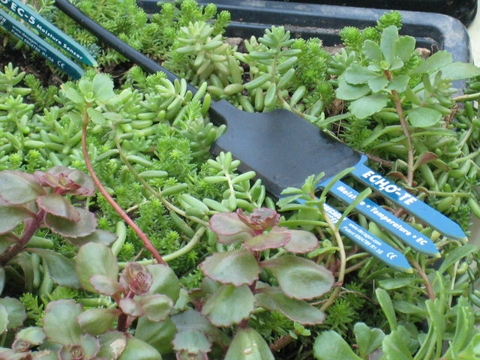You are here
Direct Sensing Approach
 Direct sensing refers to the real-time monitoring of variables directly related to plant health and plant growth. We use a number of different sensors to directly measure variables both in the root environment (such as soil moisture, temperature and electrical conductivity -- i.e. nutrient concentration) together with information about the aerial environment (e.g. sunlight, air temperature, relative humidity and wind speed).
Direct sensing refers to the real-time monitoring of variables directly related to plant health and plant growth. We use a number of different sensors to directly measure variables both in the root environment (such as soil moisture, temperature and electrical conductivity -- i.e. nutrient concentration) together with information about the aerial environment (e.g. sunlight, air temperature, relative humidity and wind speed).
The plant adapts to and/or reacts to these variables on a continuous basis to limit water loss through evaporation. Of course water loss is a natural consequence of photosynthesis (cooling the leaf) but when water is limiting, the stomata in the leaf react to the deficit in soil moisture by closing to minimize water loss.
Stomatal closure limits the potential growth of plants, which is why we irrigate plants on a regular basis -- to maximize their potential growth. The problem for us, of course, is knowing and understanding when to irrigate. In fact, we know from our initial data that we water too much (we currently estimate that to be between 5 and 20 times actual plant water requirements) -- but our problem is to know when, and how much water to apply.
The data that we get from these sensor networks affords us the ability to better understand exactly when and how much water is needed to maintain optimal plant growth. By monitoring the plant system in real-time, we can then more precisely apply small volumes of irrigation when the plant needs it.
